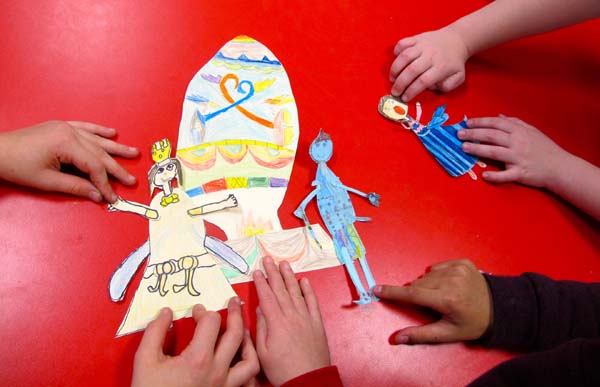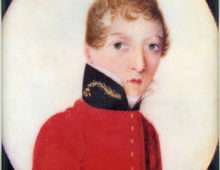What does revolution mean to me?
December 23, 2019 - Kate McNab in News & Blog Posts
How our Age of Revolution animation competition for schools can enrich curriculum work in the classroom and develop students’ cultural capital
The Age of Revolution national educational project has teamed up with historian, broadcaster and author Dan Snow to launch an animation competition for primary and secondary schools. Anna Husband, the project’s Content Producer and Learning Lead, looks at how this creative approach can support teaching and learning across the curriculum.
What is the Age of Revolution?
Have you ever… travelled on a train, used a computer, been given an anaesthetic or vaccinated against a nasty disease? Have you ever felt like something was unfair or could be better? Or had a great idea?
The Age of Revolution (1775 – 1848) was a time of seismic change and upheaval, of extraordinary ideas and innovation and of radical new ways of thinking, living and working. From campaigns for equality, rights and freedoms, to life-changing discoveries and innovations, the Age of Revolution shaped the modern world. It saw the transformation of whole nations through the French, American and Haitian revolutions; violent wars around the globe; the industrial and printing revolutions, the birth of the railways and major advances in medicine and science; as well as Chartism, the abolition of slavery, the beginnings of feminism, communism and the suffrage movements – and much more.
All of which still impacts on our lives today.
Why create a ‘revolution’ animation with my class?
The competition poses the question ‘What does Revolution mean to me?’ and asks students to respond through animation, using the Age of Revolution and our online resources as a stimulus. The animation can be influenced by a revolutionary invention, event, idea or person from the period (1775 – 1848). It could also be something revolutionary from another time, inspiration from students’ local history or in their own lives or the wider world today. The competition also encourages schools to involve objects and artworks from museums, galleries or archives in their animations.
We are looking for imaginative, creative animations, which genuinely reflect students’ own ideas and thoughts about ‘Revolution.’ The animation can be serious, funny, musical, narrative and use different tools and materials such as paper, clay, plasticine, photography and simple digital apps.
While the Age of Revolution project is firmly rooted in the people, events and ideas of the period, and perfectly positioned to support the History curriculum, there are also strong links to other subjects including English, Art & Design, Computing and Technology. A core focus – in keeping with the mood of the period – is on creativity, innovation, design and making, and on linking the histories to our everyday lives. Objects such as the Pussy Hat and Kevin Daulton-Johnson’s Captured Africans Sculpture provide a contemporary perspective.
The animation competition represents an exciting cross-curricular opportunity attached to a topic or theme, but can also be approached through a particular learning focus depending on the subject area, for example:
History: as well using our primary sources to conducting enquiries into the histories linked to this period, students can use animation as a creative way to consolidate and present their findings
English: the Age of Revolution spawned some of the most enduring poets and authors such as Robbie Burns and Mary Shelley; narratives, dialogue and clear messaging for a range of audiences can all be addressed through the creation of an animation
Art & Design: film and animation are key visual media for budding artists; objects, portraits, letters and diaries can all be used as a creative springboard; further creative opportunities also present themselves through their chosen animated medium – be it drawing, photography or 3D modelling. The period also saw the newly founded Royal Academy, spawned new art movements and gave us great artists such as JMW Turner, George Stubbs, Angelica Kaufman and George Cruikshank.
Digital skills: including animation, editing and sound recording
PSHE, SMSC and Cultural Capital: rights and equalities are themes running through the length and breadth of the Age of Revolution, as are protest, ‘having a voice’, being heard, making change. For young people these can tap in to some of the biggest issues today around subjects such as gender, climate change and the political landscape, providing inspiration for their own passions and causes.
Cultural capital: for the first time, Ofsted has created a new framework which requires schools to develop their students’ cultural capital. Rooted firmly in museum and gallery collections – this competition provides the ideal opportunity.
Not to mention being the perfect focus for STEM and STEAM projects, Arts Award, CREST Award, Heritage Award and many other opportunities and initiatives schools.
And it helps students to find ways of working together, solve problems, think critically and creatively and, most importantly, have fun!
For further inspiration, take a look at the animation we made with our fantastic group of first-time animators from Finham Primary school, and a behind-the scenes look at how we made it.
The competition
One of the best ways to learn about something is to present or explain it to someone else. By creating an animation about the Age of Revolution, students have to really focus their learning about their chosen focus and think creatively about how to get their message across, in a fun and engaging way.
We hope that presenting this as a competition will not only encourage more schools to have a go at animation, but will also mean they can share their wonderful ideas with us – and others.
The ‘What does revolution mean to me?’ animation competition is open to school groups of all ages. Our expert judges, include Historian, Broadcaster and Author Dan Snow, award-winning Casting Director Kate Rhodes-James, BBC Animation Producer Barry Quinn and Anra Kennedy, Partnerships Director at Culture24.
The competition is open to entries until February 14th 2020. Winners will be announced at the end of March 2020 and these winning entries will be showcased on History Hit TV. The winning schools will also receive £500 to support further digital and cultural learning. All entries will also feature on The Age of Revolution website once the competition has closed.
“We know that children can make some amazing observations, and this competition will allow us all to see an important period of history through a new lens. We’re looking forward to finding out how they see revolution, and how key moments in history are impacting on their lives today. This competition will encourage children, who may have never really thought about revolution before, to talk about it, to appreciate it and to learn from it.”
Dan Snow
Please visit the Age of Revolution Competition page for more information.




